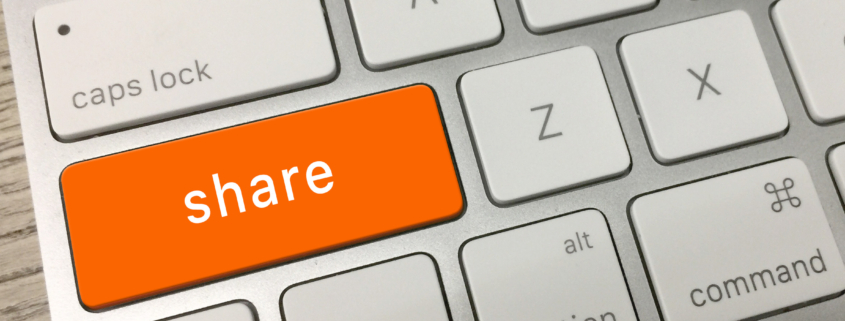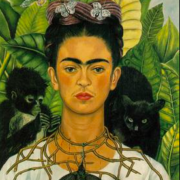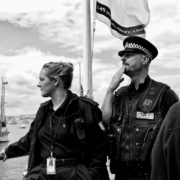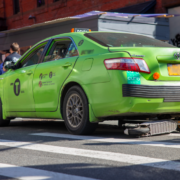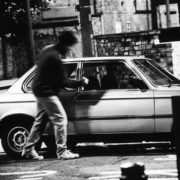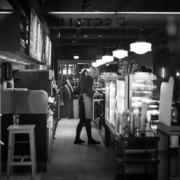Tracing the History of Documenting and Sharing Images of Graffiti & Street Art
The documentation and dissemination of images of contemporary graffiti and street art have been integral to its existence and development.
Meanwhile, how people have shared images of this material has evolved.
Much of this shift parallels advances in photographic, computer, digital, and web-based technology and the culture’s response to these developments.
While practitioners and audiences have always seen graffiti and street art firsthand, the medium’s ephemeral nature necessitated documentation for preservation and sharing.
For some subway and freight train writers, the mobility of their canvas provided a unique form of exposure. Their work traveled to different parts of the city, region, or country, creating a dynamic showcase.
Meanwhile, photos were taken and exchanged through interpersonal networks, and some of these images were reproduced in zines, magazines, and books or featured in or referenced in films.
These publications, often produced with limited resources, became vital archives of the movement’s evolution and helped establish graffiti’s visual language. Films like Style Wars (1983) and books such as Subway Art(1984) further cemented the importance of documentation in graffiti culture.
The Digital Revolution Begins
In 1993, a significant shift occurred when Susan Farrell, then a master’s student in computer science at Georgia Tech, began posting her graffiti photographs online under the name Art Crimes. She was later joined by Brett Webb, a student at the University of Southern California. Their efforts coincided with the rise of the World Wide Web, and in 1994, they launched www.graffiti.org, one of the first dedicated online platforms for graffiti documentation.
The site quickly attracted attention from graffiti writers and the news media, including coverage in The Atlantic, Newsweek, and Scientific American. Over time, the domain transitioned to www.artcrimes.com, with Farrell serving as head curator and Webb as assistant curator and system administrator. Though they were passionate about the work, sustaining the project without financial backing became increasingly challenging.
Social Media’s Impact on Documentation and Style
The landscape of graffiti (and street art) image-sharing underwent another change in the mid-2000s with the emergence of social media. The launch of Facebook (2004), Flickr (2004), and YouTube (2005) provided new avenues for graffiti writers and street artists to showcase their work to a global audience. The introduction of the iPhone in 2007, with its built-in camera and subsequent video capabilities, further accelerated the ease of capturing and sharing graffiti and street art in real-time.
Platforms like Instagram, which started in 2010, had a critical transformational impact on graffiti and street art. Reflecting on this shift, Webb noted, “Instagram was a game changer. It was the modern equivalent of sending photos in the mail to fellow graffiti writers.”
This website influenced how work was shared and the nature of the work itself. Practitioners began considering how their pieces would appear on the app, sometimes choosing locations and styles that would photograph well for social media.
However, this digital evolution came with tradeoffs: While reach expanded the reach of graffiti and street art images, the intimate connection of physical sharing networks diminished, and corporate algorithms began influencing visibility.
Seeking Independence from Mainstream Social Media Controls
As mainstream social media platforms became increasingly commercialized, particularly following Elon Musk’s acquisition of Twitter (X), many graffiti writers, street artists, and enthusiasts felt that the countercultural spirit that had long defined graffiti had been lost. They began seeking alternative spaces to share and view this content.
In response to these developments, over the last few years, dedicated mobile apps, such as Graff Map, Grafy Map, MASA Street Art, Spray Street, and Street Art Cities, that support user photo uploads have become available on the Apple App and Google Play stores. These tools attempt to reclaim the community-focused sharing ethos of graffiti’s earlier days.
For Webb, the creator of the Spray Street App, “I got to thinking that I would like to have a private app catering to photographs for urban art that would not be supported by ad revenue,” Webb explained. “The community needs to have its own tools. If we can move away from corporate platforms, that’s a win.”
The Future
While social media has increased the reach of graffiti writers and street artists, dedicated art photo-sharing apps demonstrate the community’s desire to maintain autonomy over how their work is shared and preserved.
This tension between accessibility and authenticity shapes how graffiti and street art are documented and shared. As new technologies emerge, the graffiti and street art community’s approach to documentation will likely continue to evolve, balancing the benefits of broad exposure with the need to maintain the culture’s independent spirit and artistic integrity.
Photo Credit
Title: Share Key
Photographer: Mike Lawrence

